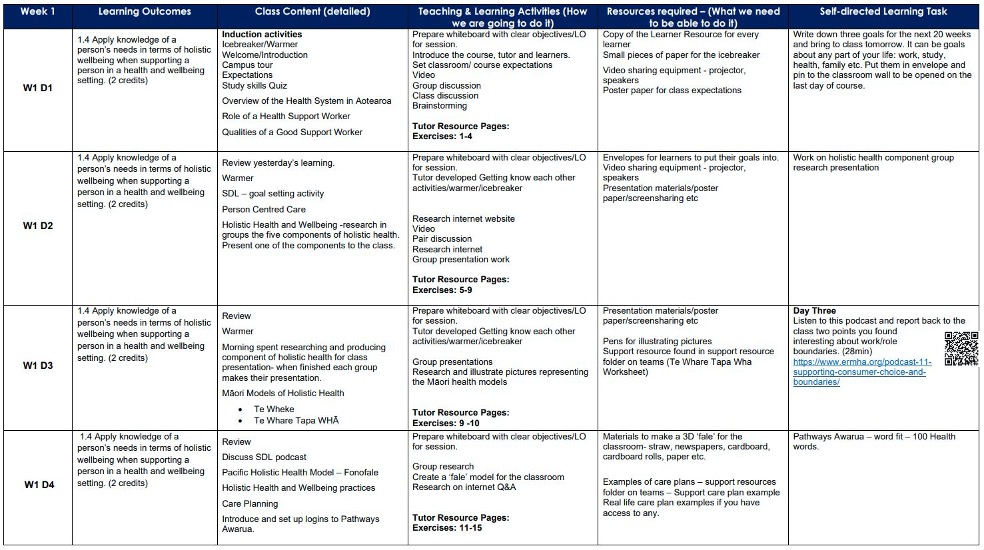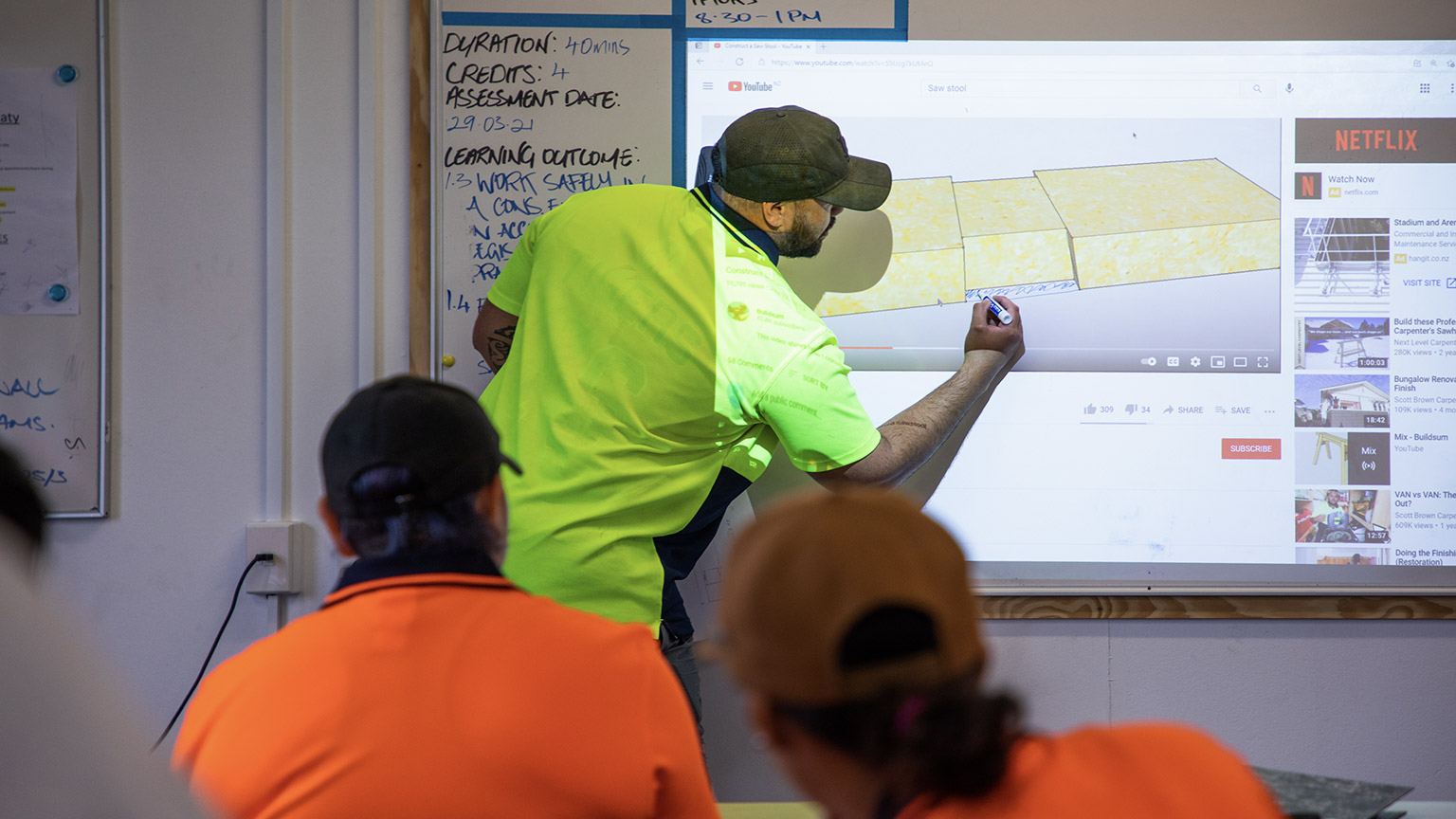Each of our programmes have a number of resources produced to help you prepare for leading the class. One of these is the Tutor Resource (TR) which outlines what the programme day to day could look like. All the content that will be covered throughout the programme is specified in the TR and should act as a guide for the overall programme structure.
The Tutor Resource has a range of content helpful to understand the structure and content of the programme. These include.
- GPOs/LO – The Graduate Profile Outcomes and Learning Outcomes cover the specific skills and capabilities students will be measured on in order to achieve the qualification. Having a firm understanding of these can help to define the level of understanding students need to gain.
- Assessments – Our assessments throughout the programme are a major method for capturing and measuring the learning. Programmes vary in the assessment methods and frequency and it’s important to know well in advance what students will be required to do for an assessment. You’ll want to make sure students have had a chance to practice all the relevant skills before they sit the assessment.
- Tutor Tips – Purple text denotes helpful tutor only tips and tricks specific to activities and content being covered.
- Daily Plan –The tutor resource outlines what content should be covered each day, specifically which pages and topics to complete. This can be flexible but gives a good idea of the order of content and a marker about whether the pace of delivery is efficient.
- SDL – Alongside the in class (or LMS) learning the students need to complete there are also self-directed hours as part of the programme.
- Activities/Exercises – The tutor resource also has some suggested activities and exercises for topics across the programme that can be a good start when thinking about your own lesson plan and activities. It will also reference to useful readings students can complete alongside the classroom content.
The Tutor Resource is there as a guide to help plan and construct your lessons. Before starting with a TR, you’ll want to make sure you are familiar with any upcoming assessments and what the requirements for that assessment are. This will help to outline what students need to understand in order to achieve the qualification.
With this in mind you can start exploring the TR. Reading through the resource and daily plan you’ll start to see the order in which topics should be delivered with some material covering the topics. The overall order is designed to introduce content at a good pace and will connect with the order of assessments. You have some flexibility around how this looks given the learners you have but the general order should be followed.
Once you are feeling confident with the direction and order of the course you can start to design what the learning will look like in class. This is where you will start to put together your lesson plans for each session. You’ll note the TR has some activity ideas and content to cover but in general you will need to add your own elements as well. Think of the TR as the programmes skeleton that needs your experience and passion added to properly bring it to life. You’ll need to produce resources to bring the content to life and tailor activities to work for the learners you are supporting. You shouldn’t be teaching directly from the TR.
Also make note of the tips in purple that are only visible on the TR. These give reminders for what you need to know ahead of the session and things to keep in mind. You’ll also see answers to some of the questions/activities written in red. Lastly some external documents are referenced and links to these can be found throughout, often with QR codes to make accessing on devices easier.
---> 🔵 CLICK – Follow this link to find your programmes resources and documents.
Alongside the TR we also have in place the programme delivery plan. This outline covers similar information you’ll find in the TR but can be easier to navigate. It will show you a simple breakdown for what content is covered on each day of the course and the overall structure for the intake. As part of the plan, you’ll find for each day: the Learning Outcomes, Class Content, Activities, Resources, and Self-directed Learning Task. This in total gives a simplified view of the course content to work from when planning lessons.
Below you’ll find an example of a delivery plan and the components it contains.

We also have a version of the course content for students called the Student Resource. This is similar to the Tutor Resource and will have much of the same content without the tutor’s tips or answers to questions. Each student should have access to a copy of this at the start of the course. They can then be used to introduce content and for students to know the course structure. Be aware because there is more content in the Tutor Resource the page numbers and layout can be different when having students follow along. Where possible use this as an additional resource for the learning and avoid teaching directly from the book.
It’s important to NZMA that our programme content (including the resources) is up to date and error free. If you spot something that needs correction or updating, you can forward this feedback to the content team by using the CIF (Continuous Improvement Form). You’ll find a link to this in the National Shared teams page under the “Moderation and CIF” channel. This form allows you to submit feedback on any part of the programme. Once you have completed the form make sure to assign it to the relevant FAL and they will prioritise the changes from there.
---> 🔵 CLICK – Follow this link to access the digital CIF form.
